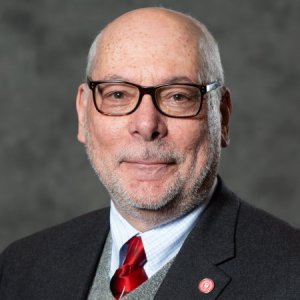Rensselaer Polytechnic Institute’s Jose Holguin-Veras, William H. Hart Chair Professor of Civil and Environmental Engineering and director of the Center for Infrastructure, Transportation, and the Environment (CITE), contends that this was a misnomer.
“Disaster-related buying behaviors or DRBBs is a more accurate phrase than panic buying,” Holguin-Veras said. “Panic refers to extreme fear that causes someone to act irrationally, which negates the possibility to reason with these individuals to change their purchasing behaviors.”
Instead, in research recently published, Holguín-Veras and team collected surveys in dozens of countries and found that, in the U.S., the top three themes were: precaution (25.79%), the anticipation of needs (22.63%) to avoid the possibility of regret if they didn’t make the purchases (16.39%), and their interpretation of the actions of others, or social cues (13.44%).
They found that the key to altering consumer behavior to maintain adequate supply levels is trusted change agents, or TCAs. TCAs refer to the representatives of groups active in disaster perceived to be knowledgeable and trustworthy such as the Red Cross, national/state/local emergency responders, firefighters, and national/state/local health officials, that can reach large numbers of people, understand the need to influence the individuals that enact “panic buying,” and are willing to act. A whopping 89% of people said that they would limit their purchases if asked by a TCA.
A typical food distribution center has two days worth of supplies. The research team found in their survey that, of the households that engaged in DRBBs, 80% increased their inventories by a week and a half!
“Managing demand is essential because modern supply chains rarely have the ability to quickly increase production and distribution of essential items,” said Holguin-Veras.
Peoples’ objectives in DRBBs ran the gamut. First, self-preservation was a primary concern. Second, altruism factored in as consumers wanted to provide for their loved ones and their communities. Third, opportunism reared its head, as people tried to cash in on opportunities to sell hard-to-find items at a premium. With this in mind, a one-size-fits-all approach will not work.
“Managing DRBBs requires effective public-private-humanitarian collaboration,” said Holguin-Veras. “The public sector has the legal authority to intervene when needed, the private sector has control over the access and supplies, and the humanitarian sector has the deep community connections.”
The sectors must work together in preparation, response, and assessment. Building trust and relationships, monitoring events and identifying situations that could prompt DRBBs, and examining legal frameworks are priorities during the preparation phase. During response, demand should be managed by working with private- and humanitarian- sector representatives, TCAs should be engaged, opportunistic purchases should be controlled to foster equitable access, and rationing should be instituted if needed. Appeals for the donations of stockpiled supplies are another measure that can be taken. Finally, a comprehensive assessment would facilitate any needed improvements.
“Dr. Holguin-Veras’ work continues to enrich our understanding and ability to respond during disasters and emergencies,” said Shekhar Garde, dean of Rensselaer’s School of Engineering. “His work shows that for solving complex interconnected challenges, understanding of human factors is as important as technological solutions. I hope that these findings will inform strategies to avoid supply shortages in the future.”
Holguin-Veras was joined in research by Rensselaer’s Sofía Pérez-Guzmán and Oriana Calderón, Trilce Encarnación of the University of Missouri-St. Louis, and Víctor Cantillo of the Universidad del Norte.
About Rensselaer Polytechnic Institute:
Founded in 1824, Rensselaer Polytechnic Institute is America’s first technological research university. Rensselaer encompasses five schools, over 30 research centers, more than 140 academic programs including 25 new programs, and a dynamic community made up of over 6,800 students and 104,000 living alumni. Rensselaer faculty and alumni include upwards of 155 National Academy members, six members of the National Inventors Hall of Fame, six National Medal of Technology winners, five National Medal of Science winners, and a Nobel Prize winner in Physics. With nearly 200 years of experience advancing scientific and technological knowledge, Rensselaer remains focused on addressing global challenges with a spirit of ingenuity and collaboration. To learn more, please visit www.rpi.edu.
Visit the Rensselaer research and discovery blog: https://everydaymatters.rpi.edu/
Follow us on Twitter: @RPINews



